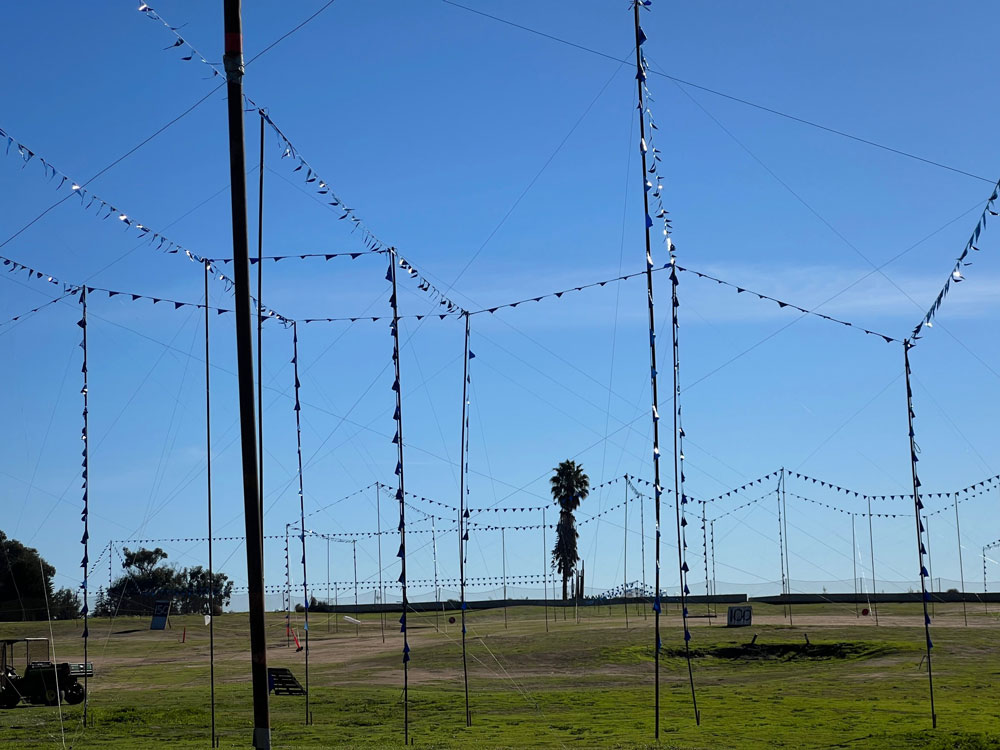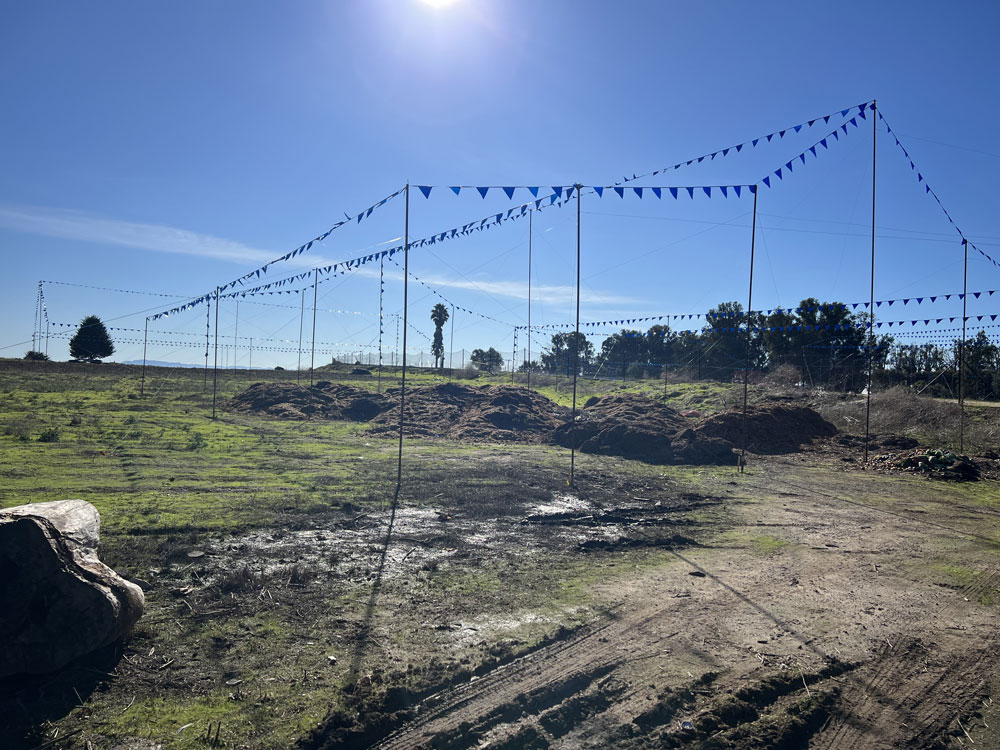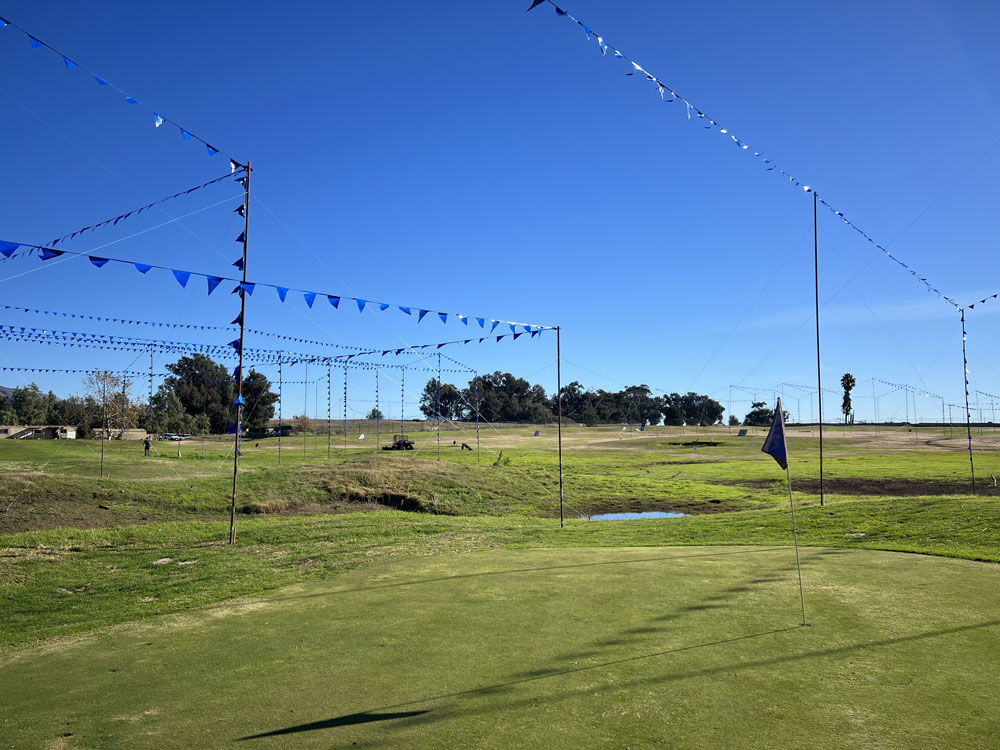Spring 2025 Update “Bluffs Watch”
A pre-application for a 191-unit housing project has been submitted for the Tee Time property. Click above for details.
Fast Facts
Proposed Resort Development on the Carpinteria Bluffs
178,000 square-feet of new structures
Compare this to:
- 1 Football Field = 57,600 square feet
- Taj Majal = 35,500 square feet
- Albertsons Carpinteria = 40,000 square feet
27.5 acres of open, undeveloped coastal land on the Carpinteria Bluffs
- The two parcels targeted for development span the Carpinteria Bluffs from the Harbor Seal Overlook to Carpinteria Avenue where Tee Time Driving Range operates today. The property is adjacent to City Hall and the Carpinteria Skatepark on one side and the 50-acre Carpinteria Bluffs Nature Preserve on the other.
- Currently there are no permanent structures at the site.
- Developers have chosen this site specifically to capitalize on the natural setting by selling it as a unique eco-experience for urban tourists.
- Although this privately-owned property is zoned for Planned Unit Development, using the Nature Preserve and Harbor Seal Rookery as resort amenities conflicts entirely with the community’s intention to preserve the Carpinteria Bluffs as open space.
- A large-scale commercial development outside of Carpinteria’s established Downtown T would create a whole new destination and business district, burdening infrastructure, tapping community resources and drawing customers away from the restaurants, shops and entertainment already offered by local business owners.
To generate maximum profit, this large-scale commercial development proposes a massive resort, including a spa, events center and restaurant.
Currently, there are no visitor-serving businesses east of City Hall. Commercial development of 178,000 square-feet of structures negatively changes the layout of Carpinteria by creating a whole new commercial district via the unnecessary elimination of open space in favor of more roads, cars, and people sprawling outside of the established visitor-serving business districts.
- 47,408 square feet — 2 apartment buildings with 41 units varied between 1, 2 and 3 bedrooms
- 39,504 square feet — 2 Hotel building structures totaling 59 rooms
- 34,776 square feet — 41 “Bungalows” in place of a currently operating organic farm
- 12,926 square feet — Spa including sauna, steam rooms, gym and reception area
- 10,851 square feet — 140 seat restaurant
- 7,413 square feet — Hotel Lobby, Reception Area, Bar, Restrooms
- 7,388 square feet — Events Center
- 3,027 square feet — Maintenance building
- 2,112 square feet — Farm structures including garage and distribution areas
- 1,566 square feet — Pool house supporting pool, hot tub, pool bar and changing rooms
- 1,339 square feet — Hotel lobby exterior deck
Currently there’s a 7-acre organic farm operating on this open land. The developer proposes reducing this by half to 3.6 acres partially planted above an underground parking garage.
- The resort development proposal states that the farm will produce food for the restaurant and a farm stand. This is an interesting concept, but the sights, sounds and smells of an organic farm are not compatible with a luxury resort.
- Carpinteria already has the Farm Cart downtown and Frecker Farm stand on Casitas Pass Road.
- There is no guarantee that an organic farm would continue to operate given the realities of maintaining a show farm at a luxury resort.
As part of the resort development, the developer proposes constructing 41 apartments for local income residents.
- Although the State of California is attempting to spur housing development, this Coastal Open Space has not been identified as a place for new apartments in local planning.
- Including 41 apartments is a ploy to overcome stringent community review and gain permission to commercially develop the Carpinteria Bluffs in a substandard way.
- If built, the resort development would require 133 employees mostly in the service sector. The proposed apartments would not support enough employees and therefore would only worsen the housing crisis and shortage.
- Since the pandemic, commercial office vacancy in Carpinteria has soared to 27 percent, according to the Carpinteria 2023 Economic Profile. Empty buildings need to be considered for housing before new buildings.
- Housing belongs within the established development footprint, and not over open space in order to sweeten the deal for a large-scale, for-profit commercial development.
While the proposed resort is on private land zoned for Planned Unit Development, there are numerous provisions in Carpinteria’s General Plan that grant decision-makers broad discretion over a project’s compatibility with its surroundings.
- According to the General Plan: “The goal of the community is: …to preserve the essential character of our small beach town, its family-oriented residential neighborhoods, its unique visual and natural resources and its open, rural surroundings while enhancing recreational, cultural and economic opportunities for our citizens.” This resort clashes with all of the above.
- The General Plan and Local Coastal Plan advise city decision-makers to consider compatibility with surrounding uses and the pattern of development in the areas surrounding proposed development. There is no pattern of development in this area of the community.
- Planned Unit Development: “The PUD land use category is intended for areas where careful analysis is required prior to development due to the sensitive nature of these locations.” The property in question is the only PUD in all of Carpinteria.
Proposed Bluffs Resort Map
Frequently Asked Questions
Overall, the project contains 178,000 square feet of structures, which is more than Casitas Plaza in Carpinteria, the strip mall that includes both Albertsons and CVS. Resort structures include two, two-story lodges with a combined 59 rooms in addition to 41 individual bungalow units. Serving the resort will be a reception area, bar, 140-seat restaurant, spa, events center and service buildings. There would also be two pools.
The apartment complex includes 41 units in two buildings with units varying between 1, 2, and 3 bedrooms.
Parking for 273 vehicles will be included on site, including some underground parking.
The project proposes an organic farm and some open space around the 178,000 square feet of new buildings on the Carpinteria Bluffs.
The site of the proposed resort and apartment complex is on the parcels totaling 27.5 acres located between the Carpinteria Bluffs Nature Preserve and Carpinteria Skatepark where Tee Time Driving Range and a farm currently operate. The property spans the entire stretch of Bluffs from the Carpinteria Harbor Seal Overlook to Carpinteria Avenue.
While there have been historic proposals to build residential and visitor-serving projects on this parcel, none have succeeded in being built. Going back to the 1960s, there was a proposal to build an oil refinery on the bluffs. In many cases, land speculators have seen that developing the Carpinteria Bluffs at a profitable, commercial scale is unwelcomed.
The parcels in question are zoned for Planned Unit Development, which may include many uses such as visitor-serving or residential. However, this designation should not be interpreted as the owners having absolute rights to build a resort and apartment complex. The City of Carpinteria’s General Plan advises against incompatible land uses and places high value on protecting natural, open spaces.
Land use in California’s Coastal Zone is protected by the Coastal Act, which values the preservation of natural resources to be accessible for public benefit.
The proposed project would have many serious impacts to Coastal Land that would be unmitigable, like impacts to view sheds, harbor seals and the enjoyment of adjacent uses like the Nature Preserve.
The resort proposes adding an estimated 133 low-paying service jobs to the local economy and only 41 apartment units. Rather than adding units to the local housing stock, the project creates a greater need for affordable housing units. This project would make the housing crisis worse.
In an effort to gain approval, this developer has claimed that the resort will include an organic farm that would supply the restaurant and a roadside farm stand. Real farmers who operate organic farms understand that farming doesn’t happen on land shared with luxury resorts and luxury resort guests. Growing vegetables is dirty, dusty and odiferous (ask your farmer).
The project applicant is Carp Bluff LLC, a Delaware Corporation registered in 2021 with offices that moved from Los Angeles to Sherman Oaks in November 2023. The registered agent is Matthew Cooper and Matthew Goodwin has been representing the project locally.
Further tangling the web of interests, MGMT Holdings, a separate company responsible for developing numerous large-scale developments in Los Angeles advertises the proposed hotel on its website.
In summary, a web of developers with several liability-reducing LLCs and zero local connection has proposed building the project. MGMT Management boasts on its website that it was recently able to flip a hotel project it had developed for record profit.
A large-scale construction project followed by intensified use/activity adjacent to a protected Harbor Seal Rookery would jeopardize one of the last seal populations on the Southern California Coast. Carpinteria’s natural amenities like the harbor seals are the community’s jewels. The Bluffs Resort hopes to package these hard-earned natural spaces for its profit by selling nature to visitors as a chic commodity, including the harbor seal rookery.
Developers have long tried to build many things on the Bluffs, including an oil refinery and many commercial concepts like hotels, restaurants and housing. Grassroots organizations have made it clear that keeping this space open is a top priority for the community of Carpinteria. For the most part, developers have gotten the message, but this does not stop land speculators from attempting to exploit bluffs open space.
Permitting agencies may look at zoning and approve projects without considering their overall impacts. Fortunately, the City of Carpinteria historically has not looked at the Bluffs through this narrow lens. Good land-use decisions guided by the city’s General Plan and Local Coastal Plan prevent incompatible uses that would have serious impacts on neighboring uses like the Carpinteria Bluffs Nature Preserve, Harbor Seal Rookery and overall community growth and character.
Over 178,000 square feet of structures are proposed to be built on the Carpinteria Bluffs—enough to cover three football fields and more—and many of the structures will be two stories tall. The view and current environment of passive recreation would be seriously jeopardized by this large-scale resort project. For Bluffs visitors walking west on any trail from the Nature Preserve’s parking lot, the proposed project will have a significant visual impact. Views from Carpinteria Avenue would be dominated by the apartment buildings and events building.
The Bluffs Resort would need an estimated 133 employees in mostly service jobs that do not offer a living wage for anyone but owners and upper management. It will benefit the developers personal economy while drawing on the community’s resources and infrastructure. The 2023 Carpinteria Valley Economic Impact Report notes that Carpinteria is at full employment already, with more jobs than residents.
The 2023 Carpinteria Valley Economic Profile states that Carpinteria Valley is at near full employment with an impressively low 3.6 percent unemployment rate. Adding a resort hotel would add more service jobs in the city without adequate affordable housing. To quote the report: “Carpinteria is a jobs center, with more jobs available than the residential labor market available to fill it.”
Additionally, there is high commercial real estate vacancy in Carpinteria, meaning there are many empty buildings, including offices on the other end of the Carpinteria Bluffs.
Finally, new statistics on South Coast Santa Barbara County hotel stays indicates consecutive months of declining occupancy.
The Carpinteria Valley Groundwater Basin has been identified through the California Sustainable Groundwater Management Act (SGMA) as a critical resource. Thus, Carpinteria Valley Water District recently formed a Groundwater Sustainability Agency to protect groundwater resources and plan for a resilient future.
Resorts and resort guests are notoriously high water users. With two pools, a spa and events center, this resort property will become one of the largest users of water in Carpinteria Valley. Adding new development of intense water usage is anathema to the needs of the community as identified through SGMA.
On its website, the development group, Sortis Holdings, describes “The Farm Carpinteria” as a “community-driven project.” This description defies all of the public comment delivered about the project at a City of Carpinteria Conceptual Review Hearing in 2022. Overwhelmingly, voices of the community condemned the concept of a Bluffs Resort, rendering the developer’s description baffling.
This community-driven sentiment is top-of-mind for generations of Carpinterians who have led the effort to preserve the Carpinteria Bluffs as open space in perpetuity. In order to begin fundraising to purchase the property, the 27.5 acres would have to be available for purchase. It has not been offered for sale by the land owner.
Absolutely! Reaching back in history, there have been numerous proposals on this property and in other sensitive environmental areas of Carpinteria that have been rejected. Developers wanted to build a marina in the Carpinteria Salt Marsh and an oil refinery on the bluffs.
Developers must gain many levels of approval before being permitted to construct a project. This project would forever transform Carpinteria and open coastal space in a way that is incompatible with the community and includes Class I Environmental Impacts to views and to neighboring uses like the harbor seal rookery and Carpinteria Bluffs preserve.
Stopping the development will become a reality when decision-makers understand that the impacts of the project would do irreparable harm to a valuable community in California’s Coastal Zone.





